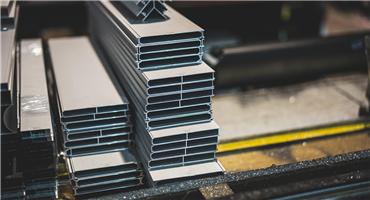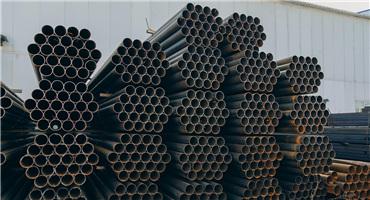The International Organization for Standardization (ISO) has adopted the European Standard (EN) system for steel standardization since 1986, primarily based on the German DIN standards with further optimization and improvement. In 1989, ISO issued a recommended designation system based on alphanumeric symbols to gradually unify international steel grade nomenclature. The current standards allow for the coexistence of both old and new grade systems.
I. Strength-Based Steel Grade System
1. Non-Alloy Steels
Structural steels: Prefix S + yield strength value (MPa), e.g., S235
Engineering steels: Prefix E + yield strength value, e.g., E235
Quality grades: Suffix letters A, B, C, D, E, indicating guaranteed impact energy (AKv) values at different temperatures.
* Previously, such steel grades began with the chemical symbol Fe, followed by the minimum tensile strength value (MPa), e.g., Fe360 (equivalent to E235). Some later adopted yield strength instead, but retained the FeXXX designation. This requires attention during selection.
2. Low-Alloy High-Strength Steels
Format: E + yield strength value, covering grades E355 to E690 (as per ISO 4950/4951)
3. Weathering Steels
Same designation format as engineering non-alloy steels. A suffix W indicates weathering properties.
II. Composition-Based Steel Grade System
1. Heat-Treated Non-Alloy Steels (Quality Carbon Structural Steels)
Format: C + average carbon content %, e.g., C45 (0.45% carbon)
Quality designation: Suffix EX (quality grade), MX (superior quality grade)
2. Alloy Structural Steels (including Spring Steels)
Based on DIN 17006. However, suffix letters indicating heat treatment differ in meaning from the original DIN system. Refer to comparative tables for guidance.
3. Special Steel Categories
Free-Cutting Steels (ISO 683/9): Categorized by sulfur, sulfur-manganese, or lead content. Grade designation follows alloy structural steel system.
Cold Heading Steels (ISO 4954): For non-alloy steels: Prefix CE, rest of the designation follows the system for superior non-alloy steels. For alloy steels: Suffix E, prefix follows alloy structural steel designation. Non-heat-treated: Prefix CC + average carbon content
Heat-treated: Stainless Steels (ISO/TR 15510): Format: X + carbon content + alloy elements, e.g., X5CrNi18-10
Heat-Resistant Steels (ISO 4955): New system same as stainless steels. Old system: Prefix H + number, e.g., austenitic grades H1–H18, ferritic grades H1–H7.
4. Tool Steels
Alloy Tool Steels (ISO 4957): Same system as alloy structural steels. Grades with carbon content over 1% use three-digit numbers. When an alloying element exceeds 5%, it's designated as a high-alloy steel.
High-Speed Tool Steels: Prefix: HS. Letters represent W, Mo, V, Co content. Mo-containing grades use two-digit groups; typical grades use three-digit codes. For grades without Mo, 0 is used as one digit. Grades without Co still use three digits. A C at the end indicates higher carbon content than the standard grade.
5. Bearing Steels
In ISO 683/17, bearing steels are classified into five main categories: through-hardened bearing steels (equivalent to China’s high-carbon chromium bearing steels), case-hardened bearing steels, induction-hardened bearing steels, stainless bearing steels, high-temperature bearing steels.
For through-hardened bearing steels, the grade designation typically begins with the three-digit number 100, followed by a format consistent with alloy structural steels. For example: 100CrMo7-4. Alternatively, grades B1 to B8 may be used to denote different compositions of high-carbon chromium bearing steels.
6. Casting Material Grade System
Cast Steel
General engineering cast steel and high-strength cast steel for engineering and structural applications are designated by two numerical values, which represent the mechanical properties required for cast steel components. The first number indicates the minimum yield strength, and the second indicates the minimum tensile strength.
Grade 200-400 only specifies the maximum contents of phosphorus (P) and sulfur (S); other chemical compositions are to be agreed upon by the supplier and purchaser. For weldable cast steel, the letter W is added to the end of the grade. In addition to specified limits for C, Si, Mn, P, and S, the maximum content of each residual element is also defined, and their total must not exceed 1.00%.
Pressure-bearing cast steel (including stainless cast steel, heat-resistant cast steel, and low-temperature cast steel) is designated by a prefix letter C followed by numbers and a suffix letter. Some grades may not have a suffix. The suffix letter H indicates heat-resistant cast steel, while L indicates low-temperature cast steel.
Cast Iron
Grey cast iron and ductile (nodular) cast iron have two methods for grade designation.
One method is based on mechanical properties: for example, 100 represents the minimum tensile strength (MPa) for grey cast iron; 600-3 represents the grade and mechanical properties of ductile iron—the first number indicates the minimum tensile strength (MPa), and the second number represents the minimum elongation after fracture (%).
The other method is based on Brinell hardness (HB): for example, H175 indicates an average Brinell hardness of 175 HB for grey cast iron, and H300 indicates an average hardness of 300 HB for ductile cast iron.
Malleable cast iron is divided into three types: blackheart, pearlitic, and whiteheart malleable cast iron. The grades are designated using mechanical property values, with prefix letters B, P, and W representing blackheart, pearlitic, and whiteheart malleable cast iron respectively. Examples: B35-10, P65-02, and W38-12.




